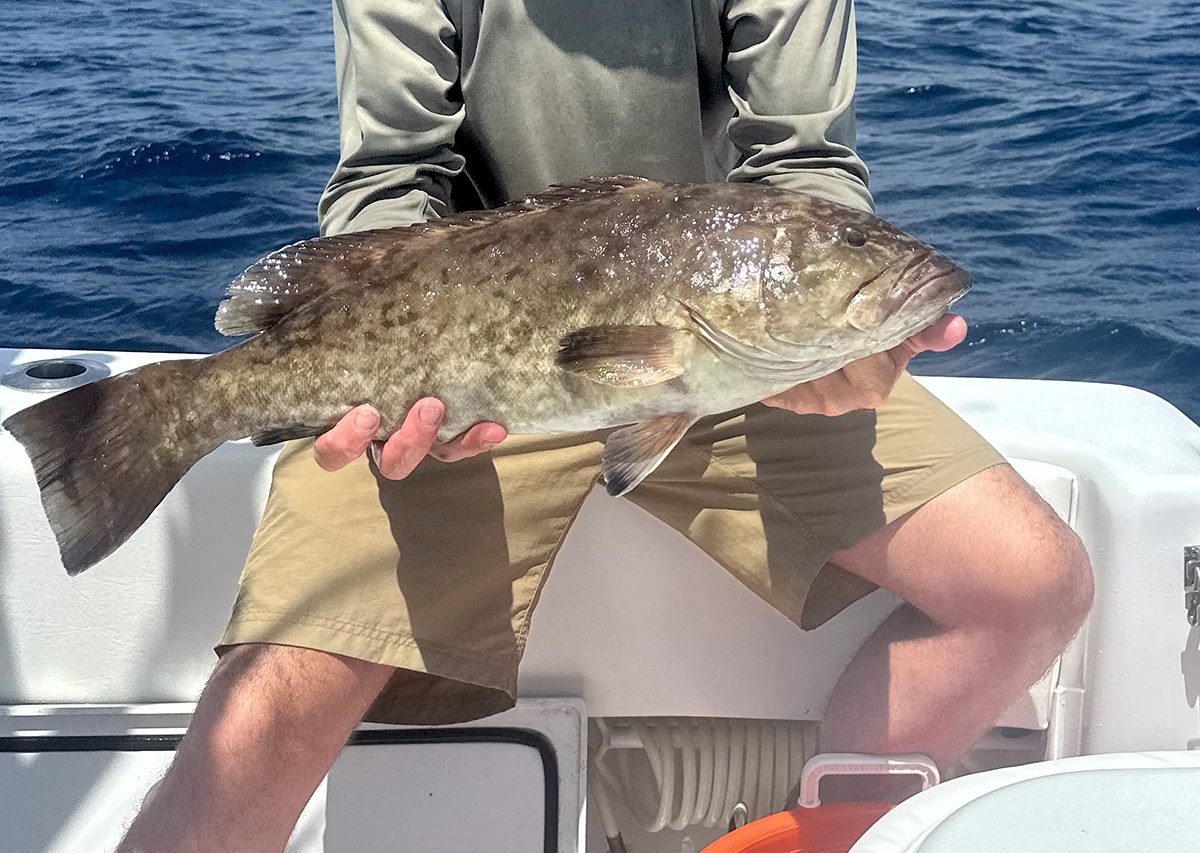
Have you ever seen a photo of a fish that was pulled out of deep water too quickly? Did you notice the poor creature’s bugged-out eyes and surprised expression?
This is a sign of a fish experiencing deep-water decompression, and it is a big problem for catch-and-release situations involving snapper and grouper fishing. Because of this, anglers in the deep-water fishery are required by federal law to have a descending device onboard their boat at all times.
Supporter Spotlight
Let’s talk about what the devices are, what they do, how we can get them, and how they are used.
First, let’s talk about barotrauma. When fish are brought up from deep water, they can often suffer severe difficulty after being released. The Florida Fish and Wildlife Commission defines barotrauma as, “The change in pressure in a gas-filled organ called a swim bladder that controls buoyancy and allows the fish to maintain a certain depth. Fish that are caught in deep water and then released can cause the gas in the swim bladder to expand and in some cases burst.”
This causes significant problems because there are very strict regulations on size limits and catch limits for fish like snapper, grouper, and seabass, among others.

Capt. Tom Roller of Waterdog Guide Service in Beaufort, a member of the North Carolina Marine Fisheries Commission, states that, “Recreational discards (releases of undersized or unwanted fish) in the fishery are out of control and need to be reduced.”
In response to this stated need, devices have been invented to allow fish to be released at the proper depth so they can swim away alive, rather than be eaten by sharks or barracudas.
Supporter Spotlight
Descender devices, as they are known, are hooked to the jaw of a fish and allowed to be pulled down to whatever depth that the fish came from before detaching by jerking the weight away, allowing the fish to swim off. Surprisingly, this works well enough that they are required by federal law to be present on any boat that participates in a deep-water bottom fishery.
“It’s a unique way to release deep-water fish to reduce release mortality that is both efficient and required by law,” Capt. Tom says.
North Carolina Department of Environmental Quality Division of Marine Fisheries Special Assistant for Councils Chris Batsavage says that they are required gear for, “Any recreational or commercial fisherman fishing in deep water for fish that are susceptible to barotrauma. Examples of fish include groupers, snappers, black sea bass, and tilefish.”
Further, he adds, “Increased survival of released fish with barotrauma should result in less mortality, which can lead to sustainable populations.”
Of course, there are now lots of products that we can use to help release the fish safely that are used every day. There are literally too many to list.
A bunch of guys have homemade devices that we’re not going to waste time talking about, due to concerns of varying effectiveness.
The main ones that you are going to most readily find are called the Seaqualizer and the Fishsaver.
The Fishsaver is a device that clips onto the lower jaw of the fish using a kind of barbless fishing hook, and you drop it down to the desired depth using weights. A sharp jerk on the line releases the fish. Seems easy in practice, but there’s no good way to regulate how far down the weight goes on the release.
The Seaqualizer, on the other hand, uses a clip on the line that attaches and releases at a predetermined depth.
Obviously, the latter is a bit more expensive, but there’s more technology involved and it offers more control.
You just need to figure out which style you want to use. If you look on the Internet, there is quite a large number of other options to choose from as well, but usually they are adaptations of one style or the other — some more expensive than others. Just make sure you get one that works properly.
Capt. Tom said he has used lots of homemade ones over the years, but Seaqualizer, he added is, “Amazing.”

OK, so now you’re out fishing for snapper in 100 feet of water. What do you have to do to be ready to go?
First thing, it’s recommended to have a separate fishing rod rigged up with a fish-release device, and have that ready go before you even begin.
Then you drop a bait down to the bottom, reel it up a couple of turns, and it’s not too long before you have a bite. Very exciting! Get the fish about two-thirds of the way up, and it just becomes deadweight on the line. You reel in the rest of the way, and when you look at the fish, its eyes are bugged out of its head and the belly is distended from the swim bladder.
It’s a little too small to keep, and rather than mess around, you quickly attach your Seaqualizer to the fish, turn and drop it back to the depth that you just got it from. The device will release, and the fish will be back in its home at the proper depth. You can then continue to safely catch and release fish that are too small, and you don’t have to worry about dumping fish over the side to feed the sharks.
Have a good time catching snappers to bring home for a delicious meal. Just make sure you know the following things:
- Rules and regulations concerning the minimum size, how many fish you can catch, and keep, for all of the various species that you could encounter.
- The seasons, because regulations can change drastically through the course of the year.
- How to use a descending device, and always have one onboard.







